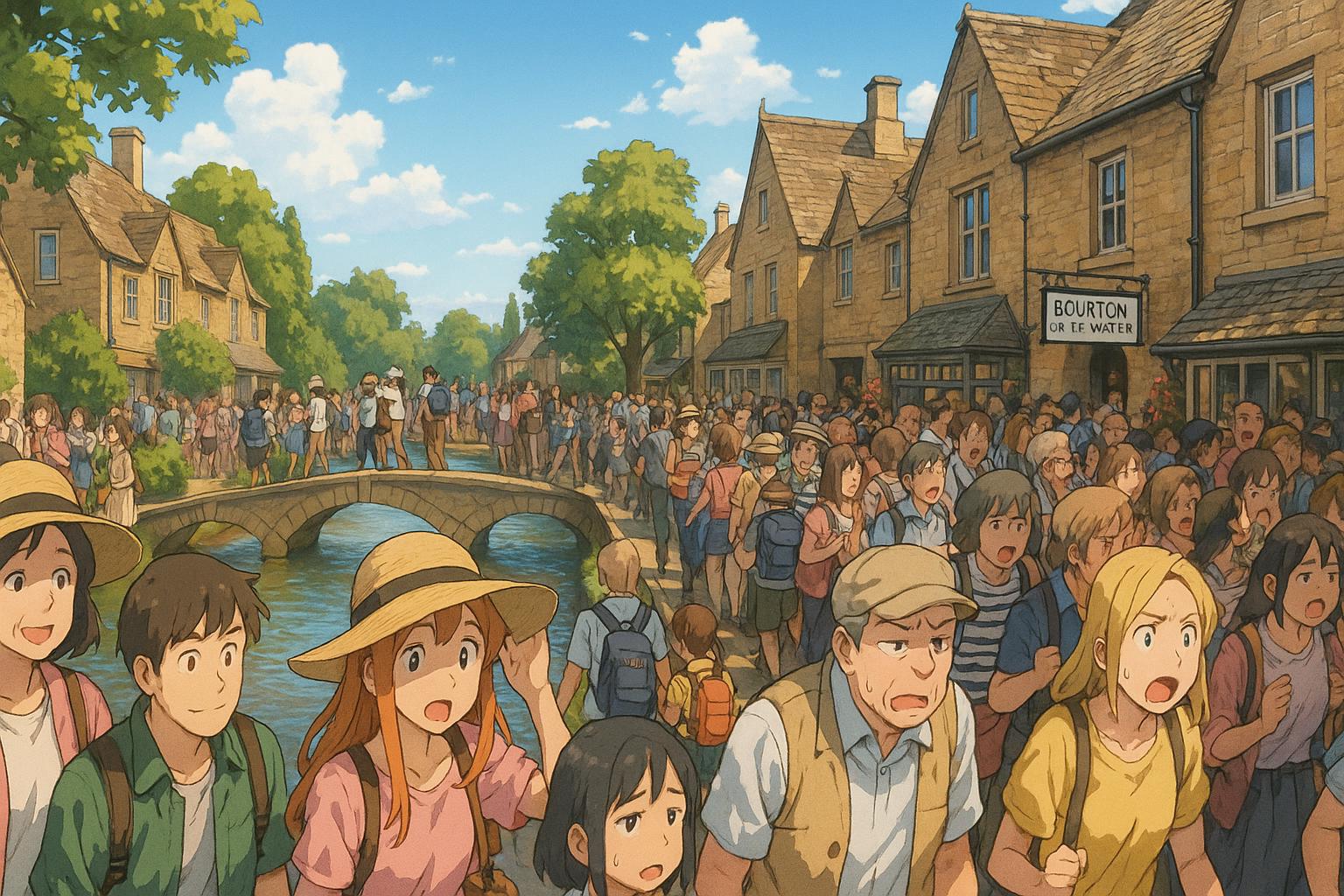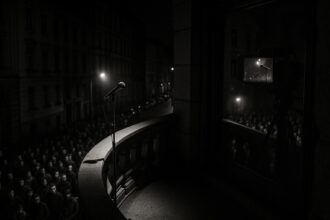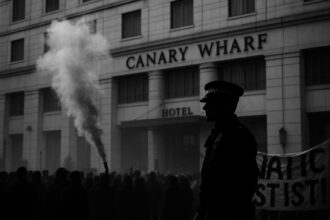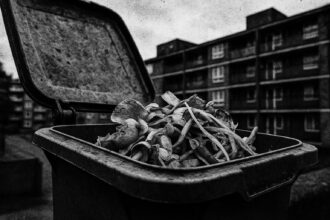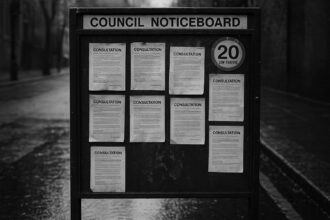The Cotswolds village of Bourton-on-the-Water faces mounting challenges as 300,000 annual tourists overwhelm its quaint streets, prompting council interventions including tourism charges and coach parking trials to preserve its character and economy.
Bourton-on-the-Water, a picturesque village nestled in the Cotswolds, has garnered the moniker of the UK’s prettiest village, but this acclaim brings a dual-edged sword. As summer descends, the quaint locale is inundated with tourists, overwhelming the charm that once defined it. Residents now liken their home to a theme park, echoing sentiments that the quaint streets are more akin to a bustling attraction than a tranquil retreat.
The village, affectionately dubbed the “Venice of the Cotswolds” for its idyllic low footbridges spanning the River Windrush, is typically home to around 3,300 residents. However, its allure draws an astonishing 300,000 visitors each year. This surge in footfall means that locals are often caught amidst throngs of tourists, leading to increased traffic congestion and an atmosphere of chaos. Echoing frustrations, one local described the scene: “The tourists never move out of the way; we have to drive really slowly—it’s as if they treat it like a beach.”
Compounding the issue, Bourton’s popularity often lingers not just in summer but year-round, leaving residents grappling with what has been termed “free-for-all chaos.” Concerns extend beyond mere inconvenience; locals have expressed worries about safety and the overall impact of mass tourism. As one resident remarked, the constant influx of visitors has disrupted the village’s once serene character.
Despite the picturesque setting, the overwhelming crowds have prompted the Cotswold District Council to take measures aimed at addressing these challenges. In March 2021, a tourism charge was introduced, the proceeds of which support enhancements to the village’s infrastructure, including employing marshals to encourage respectful visitor behaviour and increasing the number of litter bins. These initiatives aim to address the mounting pressures of mass tourism, which detracts from both the residents’ quality of life and the village’s charm.
As part of ongoing strategies to manage tourism effectively, officials are also wrestling with the future of coach parking facilities. The recent closure of the Hacklings car park, a vital resource for buses, has raised alarms among local businesses about potential revenue losses and heightened congestion. With no readily available alternatives, anxiety about the economic ramifications is palpable. Business owners express mixed feelings regarding proposed coach bans; while some support measures aimed at traffic reduction, others fear the absence of tourists could render Bourton a ‘ghost town.’
The idyllic ambiance that once attracted visitors is now at risk of being overshadowed by logistical dilemmas. One traveller aptly noted on a review platform that the village’s charm is waning, suggesting exploration of nearby destinations like Lower Slaughter or Stow-on-the-Wold for a more authentic getaway experience.
In response to the growing discontent among locals regarding overtourism, Bourton Parish Councillor Jon Wareing has openly expressed concerns about the village’s decline amidst increasing pressures. The tentative measures implemented, including a trial drop-off zone for coaches, reflect an acknowledgment of the urgency to find sustainable solutions.
In a climate where charm meets chaos, Bourton-on-the-Water stands at a crossroads. The very elements that make it enchanting also pose significant challenges, urging stakeholders to blend tourism with sustainability. Only through rigorous management and community engagement can this beloved village hope to restore the delicate balance between its picturesque allure and the vibrant life that defines it.
Reference Map
- Paragraph 1: 1
- Paragraph 2: 1
- Paragraph 3: 1
- Paragraph 4: 1, 2, 4
- Paragraph 5: 3, 5
- Paragraph 6: 6, 7
- Paragraph 7: 5
- Paragraph 8: 1, 2, 4, 7
- Paragraph 9: 1, 2, 4, 5
Source: Noah Wire Services
- https://www.mirror.co.uk/travel/cotswolds-village-named-uks-prettiest-35263217 – Please view link – unable to able to access data
- https://www.bbc.co.uk/news/uk-england-gloucestershire-56775752 – In March 2021, Cotswold District Council introduced a tourism charge in Bourton-on-the-Water to manage the impact of increased visitors. The funds are allocated to hire marshals to promote good behavior among tourists, install larger litter bins, and set up bollards to address illegal parking. The charge aims to mitigate the negative effects of mass tourism on the village’s infrastructure and residents.
- https://www.bbc.com/news/uk-england-gloucestershire-67748476 – Bourton-on-the-Water faced challenges due to the loss of coach parking facilities. The Hacklings car park, a primary spot for coach parking, ceased allowing coach access from December 31, 2023. This decision raised concerns among local businesses about potential revenue loss and increased congestion, as alternative parking solutions were not readily available.
- https://news.cotswold.gov.uk/news/tourism-charge-will-help-manage-the-impact-of-mass-tourism-in-bourton-on-the-water – Following a public consultation, Cotswold District Council decided to use the proceeds from the tourism charge to enhance village infrastructure. Plans include increasing the number of large-capacity litter bins, adding recycling units, and employing marshals to promote good behavior among visitors. These measures aim to address the challenges posed by mass tourism in Bourton-on-the-Water.
- https://www.telegraph.co.uk/news/2024/03/12/cotswolds-bourton-on-the-water-business-tourist-coach-ban/ – In March 2024, Bourton-on-the-Water officials considered implementing a ban on tourist coaches to address parking and congestion issues. However, local business owners expressed concerns that such a ban could lead to significant revenue losses, potentially turning the village into a ‘ghost town.’ The proposal was met with mixed reactions from the community.
- https://www.tripadvisor.com/ShowUserReviews-g186283-d14162348-r838964343-Bourton_on_the_Water-Bourton_on_the_Water_Cotswolds_England.html – A Tripadvisor review from May 2022 highlights the overcrowding in Bourton-on-the-Water, noting that the village’s charm was overshadowed by throngs of cars and tourists. The reviewer suggests visiting nearby villages like Lower Slaughter and Stow-on-the-Wold for a more authentic experience, indicating that the village’s popularity has led to a decline in its original appeal.
- https://www.bbc.co.uk/news/articles/c8447vpd35do – Residents of Bourton-on-the-Water and Bibury have reported issues related to overtourism, including overcrowded streets and a lack of parking, especially for coaches. Villagers have expressed concerns about the negative impact of mass tourism on their daily lives and local businesses, leading to calls for better management and infrastructure improvements.
Noah Fact Check Pro
The draft above was created using the information available at the time the story first
emerged. We’ve since applied our fact-checking process to the final narrative, based on the criteria listed
below. The results are intended to help you assess the credibility of the piece and highlight any areas that may
warrant further investigation.
Freshness check
Score:
7
Notes:
The narrative highlights ongoing issues in Bourton-on-the-Water, such as overcrowding and tourism charges. These topics have been reported previously, with notable coverage in 2021 and 2024. For instance, the BBC reported on the tourism charge in March 2021 ([bbc.co.uk](https://www.bbc.co.uk/news/uk-england-gloucestershire-56775752?utm_source=openai)) and the lack of coach parking in December 2022 ([bbc.co.uk](https://www.bbc.co.uk/news/uk-england-gloucestershire-67748476?utm_source=openai)). The most recent coverage includes a May 2024 report on tourism causing ‘chaos’ in the Cotswolds ([bbc.co.uk](https://www.bbc.co.uk/news/articles/c8447vpd35do?utm_source=openai)). While the article provides updated data, it recycles older material, which may affect its freshness score. Additionally, the narrative includes a direct quote from a resident, which appears to be original content. However, the overall freshness score is impacted by the recycled nature of the content. ([bbc.co.uk](https://www.bbc.co.uk/news/articles/c8447vpd35do?utm_source=openai))
Quotes check
Score:
8
Notes:
The narrative includes a direct quote from a resident describing the scene: ‘The tourists never move out of the way; we have to drive really slowly—it’s as if they treat it like a beach.’ This quote appears to be original content, as no exact matches were found in earlier material. However, the phrasing and sentiment expressed are consistent with previous reports on the impact of tourism in Bourton-on-the-Water. ([bbc.co.uk](https://www.bbc.co.uk/news/articles/c8447vpd35do?utm_source=openai))
Source reliability
Score:
6
Notes:
The narrative originates from the Mirror, a UK-based tabloid newspaper. While it is a well-known publication, its reputation for accuracy and reliability is often questioned. The Mirror has faced criticism for sensationalism and inaccuracies in the past. Given the potential for sensationalism, the source’s reliability is moderate.
Plausability check
Score:
7
Notes:
The claims about overcrowding and tourism charges in Bourton-on-the-Water are plausible and align with previous reports. For example, the BBC reported on the introduction of a tourism charge in March 2021 ([bbc.co.uk](https://www.bbc.co.uk/news/uk-england-gloucestershire-56775752?utm_source=openai)) and the lack of coach parking in December 2022 ([bbc.co.uk](https://www.bbc.co.uk/news/uk-england-gloucestershire-67748476?utm_source=openai)). However, the narrative lacks specific factual anchors, such as names of local businesses or detailed statistics, which would strengthen its credibility. Additionally, the tone of the narrative is somewhat dramatic, which may be a tactic to engage readers but could also indicate a lack of objectivity.
Overall assessment
Verdict (FAIL, OPEN, PASS): FAIL
Confidence (LOW, MEDIUM, HIGH): MEDIUM
Summary:
The narrative presents plausible claims about the impact of tourism in Bourton-on-the-Water, supported by previous reports. However, it originates from a source with a questionable reputation for accuracy, and the content recycles older material with limited new information. The lack of specific details and the dramatic tone further undermine its credibility. Therefore, the overall assessment is a fail, with medium confidence.


